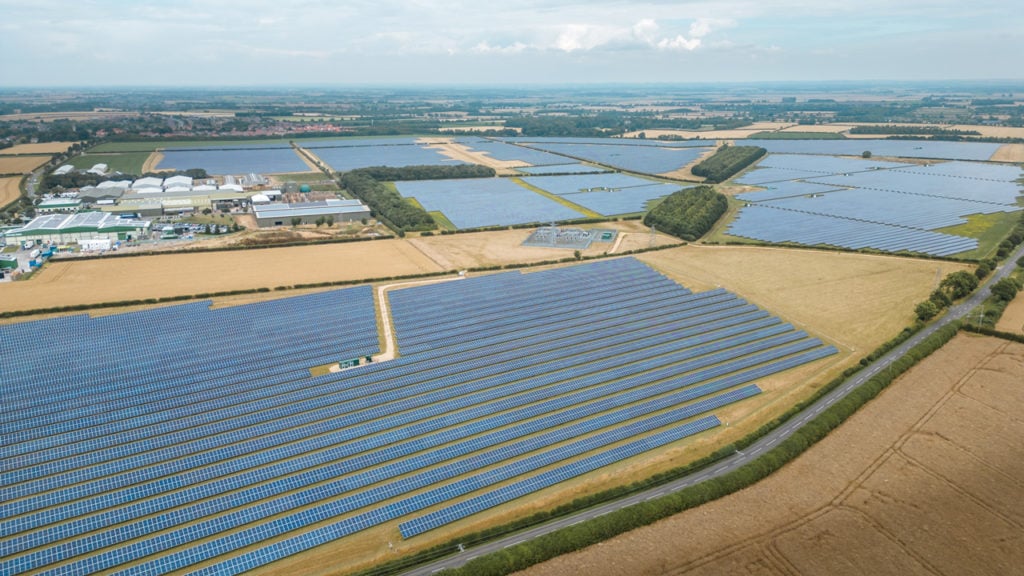
Proposals to shift the UK’s legacy programme for incentivising large-scale solar to a fixed price mechanism are under consultation. Marianne Anton looks at the potential impact on project revenues of the proposals on the table.
The Renewables Obligation (RO) has incentivised UK renewable electricity generation since 2002 through a system of tradeable green certificates called Renewables Obligation Certificates (ROCs). Following a series of finetuning reforms, the RO support scheme was closed to new participants in 2017 and replaced with Contracts for Difference (CfDs) as the main government scheme supporting large-scale renewable generation. CfDs are a mechanism for “hedging” price volatility. RO-accredited facilities will continue receiving ROCs until 2037.
Unlock unlimited access for 12 whole months of distinctive global analysis
Photovoltaics International is now included.
- Regular insight and analysis of the industry’s biggest developments
- In-depth interviews with the industry’s leading figures
- Unlimited digital access to the PV Tech Power journal catalogue
- Unlimited digital access to the Photovoltaics International journal catalogue
- Access to more than 1,000 technical papers
- Discounts on Solar Media’s portfolio of events, in-person and virtual
The journey from ROCs to CfDs
The RO scheme incentivised electricity suppliers to purchase green energy by requiring them to present a number of ROCs allocated by their market share to energy market regulator Ofgem annually. Accredited renewable generators accrue ROCs and sell them to suppliers along with the power they generate, usually under short or long-term power purchase agreements (PPAs).
ROCs have a separate price in addition to the power produced and therefore sale of ROCs resulted in a subsidy for renewable generators. Historic “banding” meant that less developed technology received more ROCs per MWh generated, resulting in a higher subsidy to encourage development of new technology.
The price generators can obtain for their ROCs is based on the “buy-out price,” which is set by Ofgem for each obligation period; where suppliers do not have sufficient ROCs to cover their obligation, they must make a corresponding payment into the buy-out fund. The proceeds of the buy-out fund are paid back to suppliers in proportion to how many ROCs they have presented. Therefore, if there is a shortfall in compliance against the obligation, ROCs become worth more than the face value of the buy-out price.
ROCs were designed to create a market and are traded at market prices that differ from the official buy-out price.
In contrast, CfDs are arguably a simpler mechanism and generators contract directly with the government-owned Low Carbon Contracts Company. The available budget is split into pots for more and less established low carbon technology, with the latter achieving higher strike prices (and therefore a larger subsidy).
Fixed-price ROCs
Last year, from 31 July to 9 October 2023, the government issued a call for evidence on introducing Fixed Price Certificates (FPCs) into the UK-wide RO schemes, presuming it would be “of particular interest to those currently in receipt of ROCs, electricity traders and suppliers, businesses operating in the energy sector, and consumers and environmental groups with an interest in the electricity sector”. No responses or follow up consultations have been published yet.
The move to FPCs is not new; in 2011, the Cameron-Clegg government announced its intention to transition the RO from a live-traded to an FPC-based scheme from 2027. This was intended to address the anticipated volatility in ROC price as early generating stations retired from the scheme and projects moved to the CfD model.
Due to a glut of stations joining the scheme prior to closure, this volatility has not yet materialised and is expected in the mid-2030s. However, there has been renewed interest in FPCs for the benefits they might offer regarding supplier payment default and the potential rebalancing/reduction of costs.
The call for evidence sets out the potential benefits of moving to an FPC system. These include price stability, reducing the risk of supplier payment default and mutualisation and reducing the cost of the RO scheme. It also outlines the potential downsides, including risk of short-term disruption, design redundancies, reduction in suppliers’ working capital and reduction in scheme value. The call for evidence also sketches out two possible models for an FPC-based RO Scheme.
Under Model 1, a central counterparty is appointed and – unlike the current system – no trading in certificates is allowed. The rationale is that this could enable increased revenue certainty for generators, create long-term administrative savings for suppliers and reduce consumers’ costs (as third party traders’ fees would be eliminated).
Under Model 2, a central counterparty is still appointed but trading in certificates is allowed. This maintains the current portability of ROCs and allows market participants more leeway in managing their cashflow. Trading should also foster stronger relationships between generators and suppliers.
Whatever its final shape (if it does, indeed, materialise), an FPC system will have enormous ramifications for players dealing in ROCs. Previously, the government had said that, under an FPC system, it would buy ROCs directly from generators to protect existing PPAs. But as ever, policy remains subject to change.
We recommend clients check their PPAs well in advance of the impending change, particularly where large portfolios may be affected. Any such transition could have a substantive impact on revenues payable under a PPA. If a PPA expires before 2027, revisions to the RO scheme are unlikely to present issues. However, for those lasting beyond 2027, we recommend a review focussed on determining what (if any) provisions are made for a transition to FPCs.
Marianne Anton is counsel in Watson Farley & Williams LLP’s London Regulatory, Public Law & Competition team. Her practice includes advising on a broad range of energy matters, notably in the renewables sector, from corporate and commercial transactions to regulatory compliance requirements and power market restructures.







